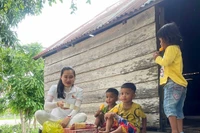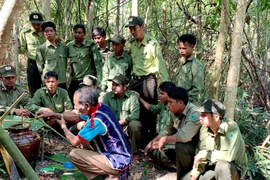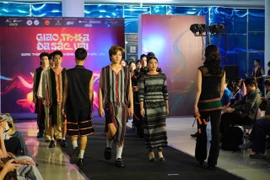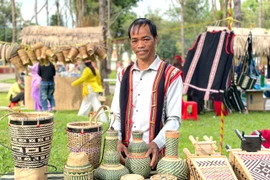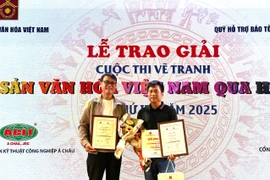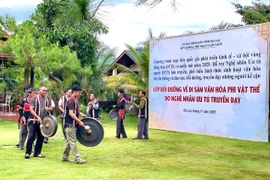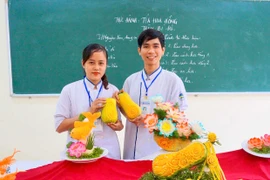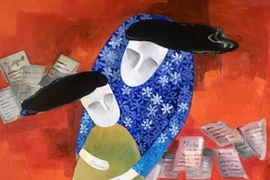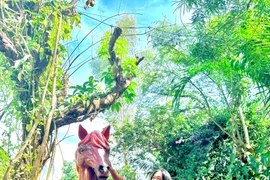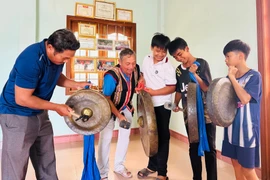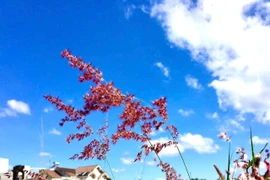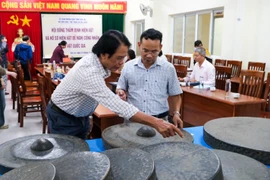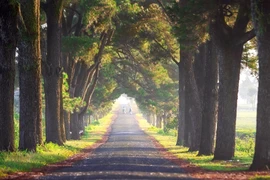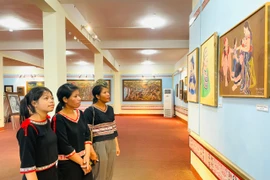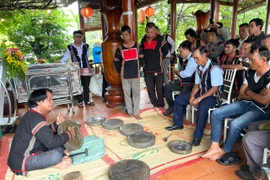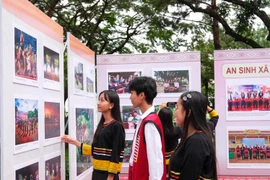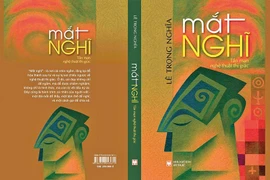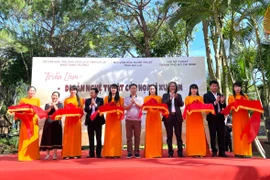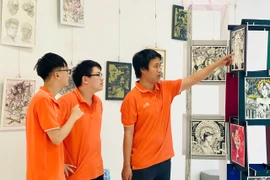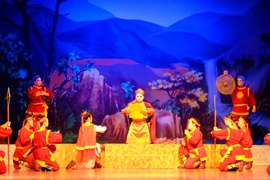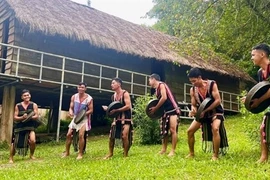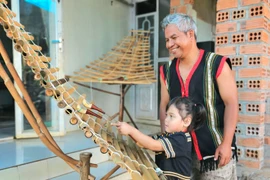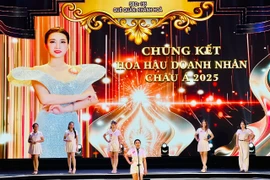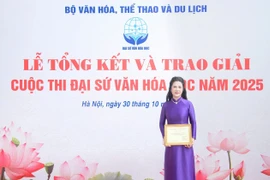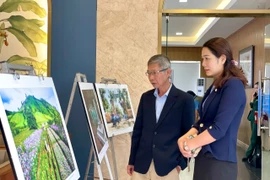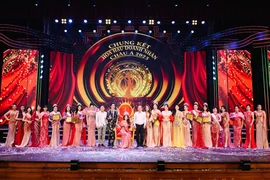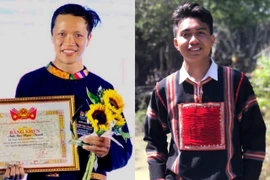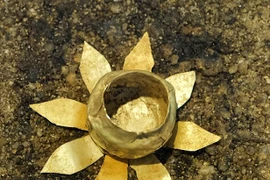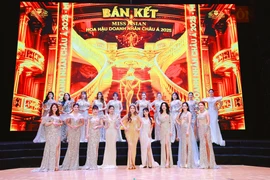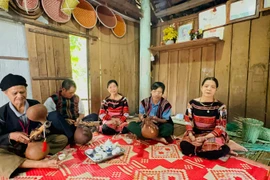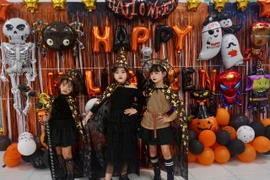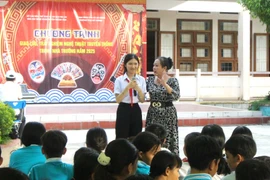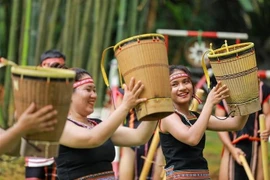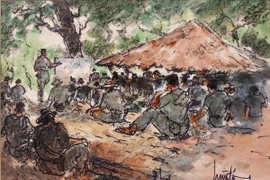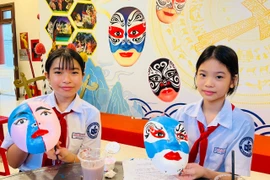After 40 years in Gia Lai, a highland region that has never ceased to captivate with its pristine cultural identity, artist Hồ Thị Xuân Thu continues to demonstrate an impressive artistic work ethic, while also connecting with and inspiring a new generation of female artists in the area.
Pursuing Vietnam’s traditional lacquer painting
* Sculptor Phạm Văn Hạng, upon visiting your studio, was moved and “amazed by your physical endurance.” Why have you chosen to devote yourself to lacquer painting for so many years?
— In the beginning, many friends and colleagues were concerned for me, but I chose to pursue lacquer painting because it is a traditional Vietnamese art form, and its works are remarkably durable over time. After experimenting with various materials, I realized this was exactly the medium I had been searching for.
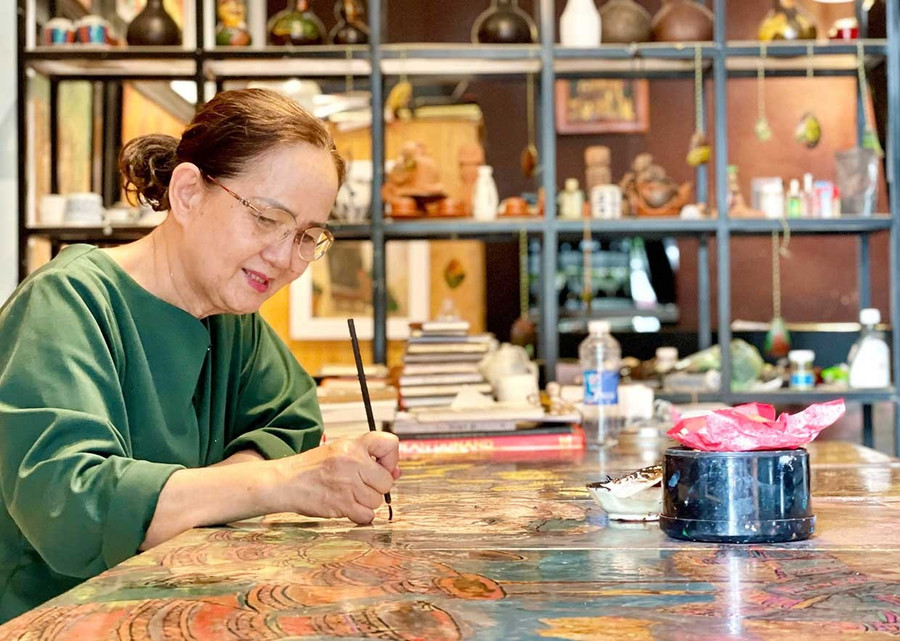
* It is well known that creating lacquer paintings is labor-intensive and requires meticulous effort, making it a challenge for any artist, especially women. Could you share your thoughts on this?
— It’s true that lacquer painting is very demanding. First, artists must get used to the possibility of allergic reactions to the lacquer. Early on, I suffered from skin irritation and sometimes even swelling that required hospital treatment, but I persisted and eventually adapted. This art form dries in humidity, so it depends on “favorable weather and conditions”; if it’s too humid or too dry, the work can be ruined, forcing you to scrape off painstaking details and start over—a truly arduous process.
The most physically taxing part is polishing the painting. It takes both strength and technique to achieve the right finish, and after polishing, you paint again—sometimes over ten layers. Moreover, pursuing this art requires good “management” of many things: time (balancing family and work), finances (as materials are costly), and emotional flow (since the process from start to finish is often lengthy). So, regardless of whether the painting turns out beautiful or not, the sheer artistic labor involved in lacquer painting is already highly commendable.
Embracing the Beauty of the Central Highlands
* When people mention artist Hồ Thị Xuân Thu, art lovers immediately think of a woman from Huế who is passionate about the villages of the Central Highlands. Surely, it must take a deep and profound love to depict village life so vividly and authentically?
— The culture of the Central Highlands gradually seeped into me from 1985, when I began working at the Gia Lai - Kon Tum Department of Culture (as it was then known). In the years that followed, my husband, photographer Trần Phong, and I traveled together to remote villages throughout the province—he took photos, I sketched. Sometimes, we would stay with friends in the villages, cook our own meals, and pick fruit from their gardens. The people of the Central Highlands are so kind and hospitable.
The beauty of the land and its people slowly touched and filled my heart in a genuine, natural way. I see beauty everywhere—from simple daily life to culture, beliefs, and spirit. If my paintings possess a rustic, free, and powerful quality, it is the authentic value of Central Highlands life that I have absorbed—or perhaps, I have become a part of the Central Highlands myself.
I named my 2024 solo exhibition “Listening to Stories of My Village” because I now see these as stories of my own village, not just tales of the Central Highlands through the eyes of a woman from Huế.
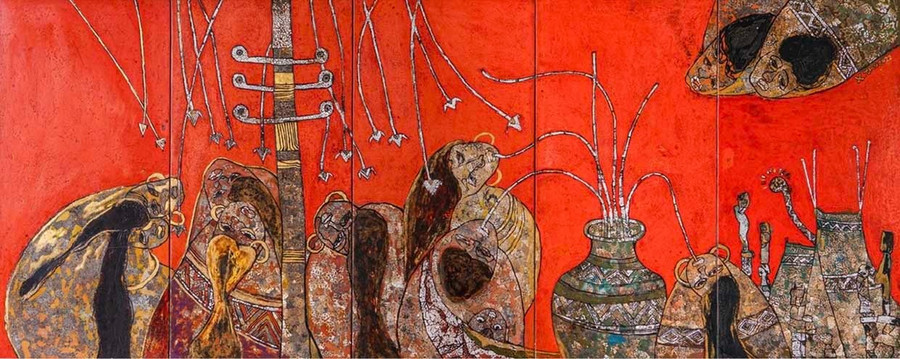
* Among your works about the Central Highlands, which piece holds the most memories for you?
— That would be “Men rừng” (Forest Yeast), measuring 80x200 cm, created in 2005. At the time, it was the 30th anniversary of the province’s liberation, and I was busy with propaganda panels and setting up outdoor stages. I vividly remember a night when heavy rain and strong winds toppled the main stage’s panel, so my colleagues and I had to stay up all night to rebuild it.
Just then, the Ministry of Culture and Information (now the Ministry of Culture, Sports and Tourism) announced a call for outstanding works to be exhibited at the 2005 APEC Summit. “Men rừng” was submitted and honored to be selected.
The piece later appeared in several other exhibitions in Ho Chi Minh City and Hanoi. Many people have offered to buy it, but I want to keep it as a milestone in my artistic journey.
Breaking the Mold to Capture Life’s Rhythm
* Creative constraints are a constant for artists. Yet your determination to reinvent yourself by breaking away from familiar patterns to paint the Central Highlands has surprised many. Instead of vibrant festivals, your works depict simple, everyday scenes that are deeply moving. At over 60, what drives you to remain so passionate?
— Before 2005, I was very consistent in my creative output, but as my children grew, so did my ambitions as a mother. I started an art and advertising company, throwing myself into business to provide for my children’s education. As a result, my time for creating art was significantly reduced.
However, I often asked myself: why not change, why not reinvent myself? I aimed to rely less on familiar motifs and decorative patterns, focusing instead on the rhythm of movement and living spaces. Once I committed to this direction, my paintings flowed effortlessly. It feels as if when you love your work, it loves you back. I often tell my students: when you start, don’t think about painting to sell or to exhibit. Paint what you love first, put in the effort, and you will always reap something in return. “A woman’s diligence will not go unrewarded.”
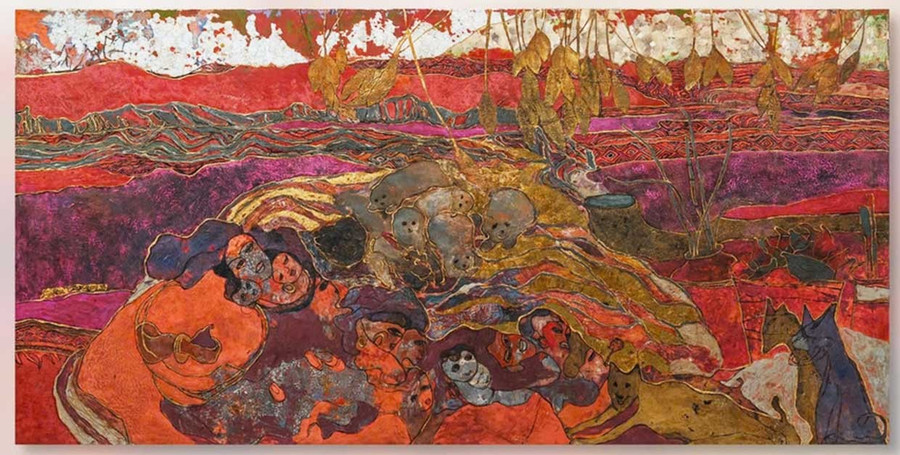
* Despite your busy schedule, in recent years you have initiated solo exhibitions for female artists in the province, and soon, the first-ever North-Central-South Women Artists Exhibition in Pleiku, coinciding with Vietnamese Women’s Day (October 20). Why have you chosen to light a candle not just for yourself, but for many others?
— Although initiating these activities takes up a lot of my time, I still want to create a platform for female artists both within and outside the province. It’s an opportunity for exchange and connection, as well as motivation for each person to find new inspiration in their artistic pursuits. In truth, when you share warmth, you are also warmed by others. I myself have been connected with and learned from the younger generation, gaining renewed creative energy.
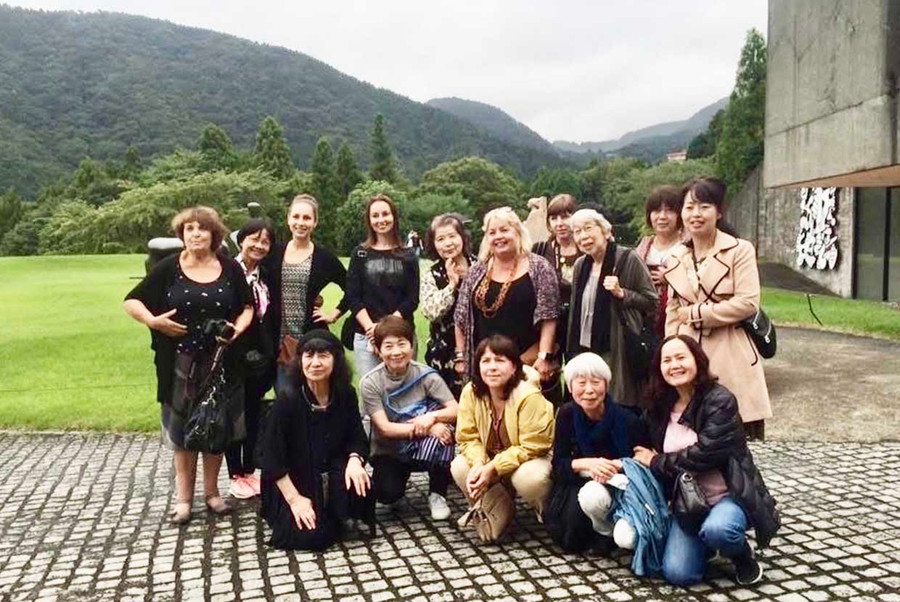
Artist Hồ Thị Xuân Thu, born in 1960 in Huế, graduated from the Hue University of Arts. She is currently a member of the Gia Lai Literature and Arts Association and the Vietnam Fine Arts Association. She has received numerous top honors at the Gia Lai Provincial Literature and Arts Awards, the South Central and Central Highlands Fine Arts Exhibitions, and awards from the Vietnam Union of Literature and Arts Associations.
Hồ Thị Xuân Thu has also been invited to participate in many international exhibitions, including: the International Women Artists Group Exhibition in China and Japan (2015, 2016); the Vietnam-Russia Exhibition in Ho Chi Minh City (2016); and the International Women Artists Group Exhibition in Russia and Japan (2018, 2019).
Since 2004, she has been highly regarded by experts for her three solo exhibitions, the most recent being “Listening to Stories of My Village” in Ho Chi Minh City in 2024.

